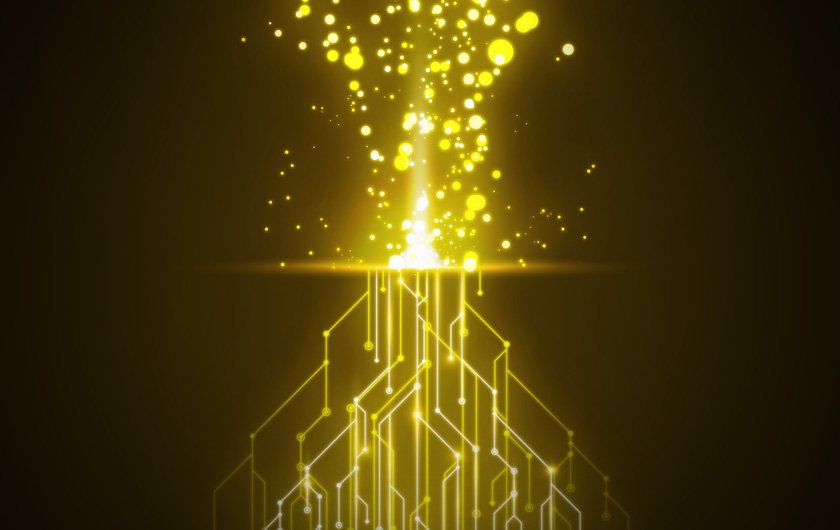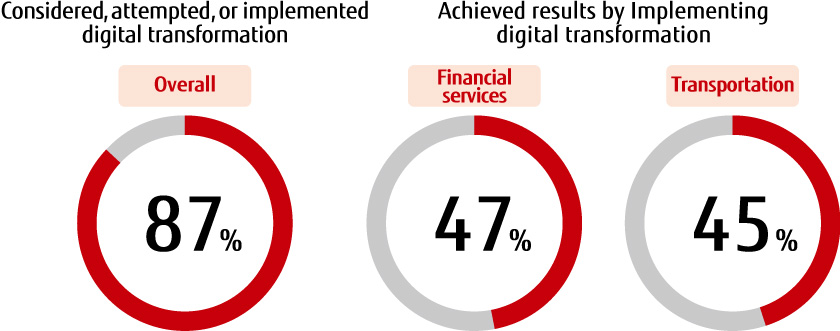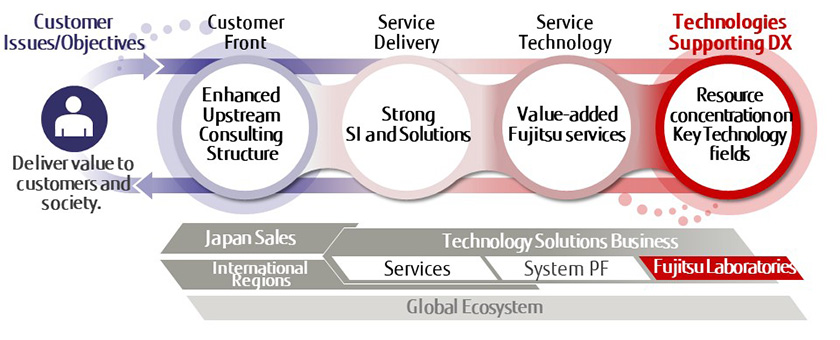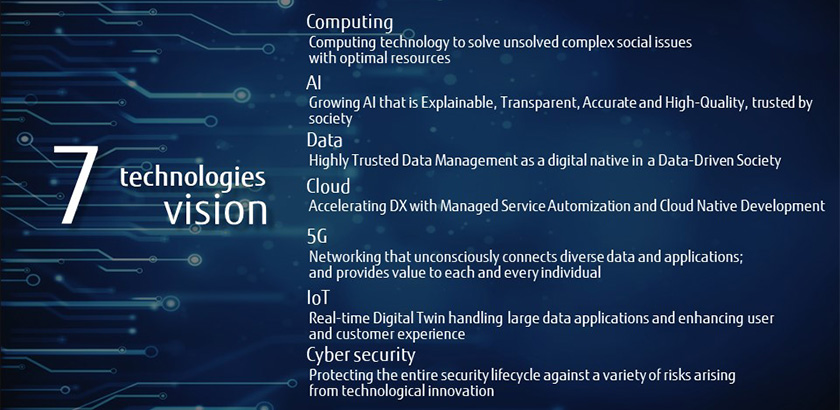
There's a growing awareness that digital transformation (DX) will be crucial for business management in the future. To achieve this, it's necessary to respond to drastic changes in the business environment and transform products, services, and business models by using data and technologies. In addition, businesses must plan to build a framework to ensure stable profits after transforming their traditional corporate cultures through DX. This article will explain why DX is now necessary and what value Fujitsu can deliver to customers in the era of DX.
The Aging of Existing Systems and Changes in Consumer Behavior
The Urgent Task of Responding to Digital Disruption
In February 2019, Fujitsu carried out an independent survey of business leaders worldwide to find out how far companies have got in their DX implementation. The survey results revealed 87% of respondents had considered, attempted, or implemented DX within the past three years. The financial and transportation industries were found to be the most advanced. (Figure 1)

Figure 1: Have you started digital transformation within your organization? (Fujitsu Global Digital Transformation Survey 2019)
Why is DX attracting so much attention today? There are three possible reasons
1. Continuing to use existing legacy systems will visibly limit corporate growth.
Digital technologies, such as the cloud and IoT, are rapidly evolving and helping to create an environment in which companies can use systems at cheaper prices without owning the assets themselves. Now is the time to consider transforming business models and creating new businesses by using such technologies.
2. Changes in consumer behavior.
Consumers' mindsets have changed in various ways, such as transitioning from objects to concepts, and from possession to sharing. For example, the increased number of registered car-sharing service users shows people now find value in the experience of using a car, not in possessing one. To accommodate this shift to providing concepts instead of simply selling objects, companies need to change their business models and consequently review their information systems.
3. DX is an effective instrument for responding to digital disruption.*
It's a phenomenon that's already occurring in various areas. For instance, US-based Uber Technologies has launched a disruptive innovation in the taxi business by employing ordinary drivers as taxi drivers.
This type of digital disruption is occurring to varying extents across multiple industries. For businesses to maintain their competitive edge in the reconstructed business environment following digital disruption, they must initiate digital disruption themselves through DX.
What technologies should be used to achieve digital transformation (DX)?
To achieve DX, an enormous amount of data is required. Since it's impossible to collect all such data using an on-premises system, use of cloud services is a prerequisite.
In some cases, an enormous amount of data is collected not only by companies that want to achieve DX but also by their partner companies as well as Internet-connected sensors and other means using IoT technologies. As it's predicted that the number of networked devices will reach 80 billion worldwide in fiscal 2020, the IoT will become a fundamental technology for digging in these "gold mines".
Of course, collecting a massive amount of data is no meaning unless it can be utilized. AI is one of the required technology for analyzing this. As more of these technologies come into wide use, the element of trust in technologies and data should never be forgotten. AI will come into even wider use in tandem with the development of deep learning, which is a mechanism for self-learning data and finding solutions autonomously.
The cloud, IoT, and AI technologies also require a network environment. The year 2020 will see the full-scale commercialization of 5G, which will raise the performance of key technologies for achieving DX. 5G's commercialization will bring about the next generation of DX.
There are many other technologies available to achieve DX, and more and more new technologies will emerge in the future. Therefore, when building actual systems, it's important to pay attention to new technology trends.
Fujitsu's strategy for DX and technology
Previously, Fujitsu has provided products and services to customers as an ICT company. However, at the management direction briefing held in September 2019, we announced our own transformation to a "DX company". Now, we'll work to solve social issues and customer problems based on technologies to create a virtuous cycle that influences the environment, society, and businesses. By becoming a DX company ourselves, Fujitsu will drive innovation in society and share the knowledge we acquire with customers.
Fujitsu's strength is the knowledge we've accumulated over years in the group's R&D institutions as well as the industrial and operational know-how cultivated through numerous business dealings with a variety of customers. We're now hoping to more actively translate this into technologies that provide further value to customers and society. In addition, we're planning to use know-how specialized to each industry and operation to develop cross-industrial value-creating activities. (Figure 2)

Figure 2: How Fujitsu will become a technology-based DX company.
Fujitsu has outlined computing, AI, 5G, IoT, cyber security, the cloud, and data as seven technological focus areas which are inevitable for supporting DX in the future.
However, none of these technologies can solve social problems and achieve DX in silo. Moreover, the value of an exceptional technology can't be conveyed if people don't understand how it helps society. For this reason, Fujitsu has set out the technologies' advantages and position within our technologies vision. (Figure 3)

Figure 3: Fujitsu's Seven Technologies Vision
We will pursue these technological areas from the viewpoint of a global business and provide them through delivery centers (GDCs) established at eight global bases. Technologies generate value only when used by people. By fusing these seven technological areas, Fujitsu is carrying out R&D on the distinctive technologies necessary for helping people and delivering value. This will also establish trust in the digital era and provide technologies that enable customers to also become a DX business.
*: The destruction and reconstruction of existing services and business models that's caused by digital technologies.











